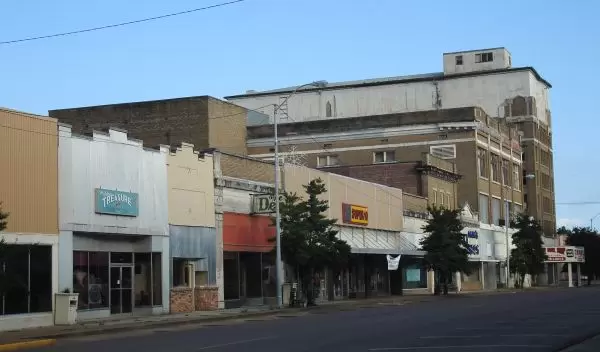
Violent Crime and Civic Engagement in Rural Communities
Violent crime doesn't just occur within city limits. It's a troubling aspect of life in rural areas as well, but researchers interested in understanding the nature of violent crime in non-urban settings faced a special challenge--the conceptual framework for studying violence in urban areas and neighborhoods doesn't work for rural areas. So says Matthew Lee, a sociology professor at Louisiana State University.
"Unlike the urban setting, most rural communities do not have neighborhoods in the traditional sense of a relatively small and well-populated spatial unit," Lee explains, "and in many communities, the nearest neighbors are actually miles away."
So Lee, a recipient of a prestigious National Science Foundation (NSF) Faculty Early Career Development (CAREER) award--given to outstanding researchers near the beginning of their academic careers who are committed to integrating research and education--developed a new conceptual model and it led him to identify factors that explain the variation in crime rates among rural areas.
Just as some cities experience more violent crime than others, the same is true for rural areas. Lee defines violent crime "as the official reported rate of murder, robbery and aggravated assault." Rape statistics are not included because "there are serious problems with underreporting for that crime," he asserts.
He points to Mississippi's Delta Region, parts of Appalachia and Louisiana's Florida Parishes as having high rates of violent crime, despite their predominantly rural character.
Lee published the results of his research in Civic Community in the Hinterland: Toward a Theory of Rural Social Structure and Violence, which appeared in the May 2008 issue of the scholarly journal Criminology.Civic Community
For his study, Lee looked at counties that had populations of between 1,000 and 25,000 residents and that reported at least 90 percent of their data to the Federal Bureau of Investigation's (FBI) Urban Crimes Report (UCR) between 2000 and 2002. He discovered that rural areas having a stronger civic community experienced significantly lower rates of violent crime. The decreased rate in crime is because the capacity of the communities themselves to integrate their members, regulate their behavior and collectively solve community social problems is substantially enhanced, according to Lee.
Indicators of civic community include the existence of locally oriented businesses, the length of time people lived in the same house, rates of home ownership, the number of congregations, civic associations, family farms and other groups (such as the PTA/Parent-Teacher Association and the Girl Scouts), and the level of voter turnout.
Lee and other social scientists who share the civic community perspective generally assert that communities with a strong local cooperation base, a locally oriented business climate and a participatory culture can withstand extra-local pressures and solve local problems more easily and efficiently.
"Communities with high levels of 'civic engagement'--individual and collective actions designed to identify and address issues of public concern--are better off on a variety of civic welfare outcomes, including lower poverty and unemployment rates, higher median incomes and lower violent crime rates," Lee explains.
While Seattle, Wash., is not a rural area, Lee cites it as an example of successful civic engagement. Others also share that view. According to the Social Capital Community Benchmark Survey (part of an ongoing initiative of Robert D. Putnam, distinguished scholar and social capital researcher at the John F. Kennedy School of Government of Harvard University), the city of Seattle scores high on 'civic leadership,' 'associational involvement,' and other similar indicators.
Lee points to the effects of globalization as a key factor in the shift of a peaceful rural area to one with rising violent crime. Such change leads to significant community-level 'structural differentiation'--this occurs when a society goes from simple to a more complex organization. These changes include the corporatization of agricultural production, the disruption of local communities through the development of energy boomtowns--a community that experiences sudden and rapid population and economic growth--and the moving of young adults to metropolitan labor markets.
"Currently, a substantial body of research suggests that communities dominated by giant corporate interests are vulnerable to the vicissitudes of global markets and profit-driven corporate decision makers," Lee noted.
Lee is now researching civic community and violent crime rates in rural settings from 1980-2000. And, although he maintains ongoing research of rural communities in the United States, he hopes to start a project on murder in the city of New Orleans before and after the flooding due to Hurricane Katrina.
